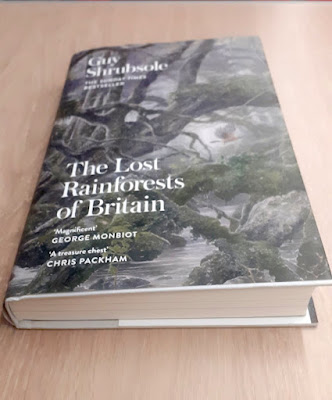I have just returned from an - as always - excellent spring field trip with the British Lichen Society. This year it was held at Moffat, in the Southern Uplands of Scotland.
For those of you who have driven up the M6 then the M74 to Glasgow, or down from Glasgow, do consider making a detour to Moffat just 1 mile from the M74. There is lots to see. From sheep grazed mountains to old woodland and parkland and graveyards. All with their own rich selection of lichens. Whilst not quite as dramatic as the Outer Hebrides, or Morven (the location of recent trips) it was certainly a lot nearer to my home. And we had a great place to stay in - The Well Road Centre, an independent hostel that we rented for the week.
There isn't time or space to write everything about our trip. So here are
1. A few pictures of spectacular places visited and a lichen at each
2. A homily to International Dandelion Day and to the Scottish delicacy of Macaroni pies
3. A mention of Temperate Rainforests
Day 1: Carrifran This valley has been bought and native trees planted from 2000 on wards to make it into Wildwood.
 |
| Lecidea grisella - It had gone red with C (now fading) . The margin of the thallus is fairly continuous - i. the rugose nature and areaoles are not separated at the edge of the thallus. |
 |
| Judith setting off to catch up with the others on the way to Grey Mare's Tail |
1. No visit to Scotland for me would now be complete with out macaroni pie for my packed lunch . Moffat has two bakers both with excellent freshly backed pies at 7am, and R.Little's have won an award for macaroni pies.
Just outside the shop is a row of lichen decorated rowan trees - and this one also has a higher plant epiphyte on it - Dandelion - suitable for International Dandelion Day on Sunday 30 April. Happy International Dandelion Day Everyone!. (Epiphyte means a plant growing on another plan
I have started reading Guy Shrubsole's book "The Lost Rainforests of Britain", and am up to page 100. - His definition of a temperate rainforest is "A wood where it's wet and mild enough for plants to grow on other plants"
Moffat's climate just scrapes into being wet enough to be classified as a temperate rainforest area.
And here we have an epiphyte growing on a tree:- A dandelion... So is Moffat High Street a temperate rainforest?
(I say tongue in cheek)
Places even further west are wetter and have much more specialised rainforest mosses and lichens. Scotland’s rainforest, also known as Atlantic woodland and Celtic rainforest, is made up of the native woodlands found on our west coast in the so-called “hyper-oceanic zone”.
Temperate rainforest is actually rarer than the tropical variety and covers just 1 percent of the world's surface.
On the last morning of the trip we did visit a (sadly small) but wonderful area of ancient trees - with forestry encroached on one side - It was SSSI. It had some lovely old gnarled and lichen covered trees. It had Lobaria pulmonaria, (Lungwort), Thelotrema lapidinum (Barnacle Lichen) and several more species of ancient woodland including - Heterodermia obscurata, Megalaria pulverea and Hypotrachyna sinuosa.
 |
| Rowan tree growing on another tree. |
 |
| Hypotrachyna sinuosa - has yellow green soralia on the lobe tips. |
How had these trees survived? I mused with the people in out car - Maybe the people who owned the land 200 years ago (or whenever) were rich enough to keep them as parkland.
On Tuesday I am leading a walk at Ingleborough in Yorkshire on "Lost Rainforests of Yorkshire".. so must read more of the book by then.
Should you you come on the walk - please bear in mind that this part of Yorkshire did lose most of its old trees many years ago. Also it is only abut 40 or so miles away at the crow flies from the mills towns of Yorkshire and Lancashire, so would have suffered from the sulphur dioxide and smoke pollution spreading over here up to the 1950s.











No comments:
Post a Comment